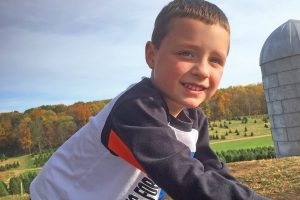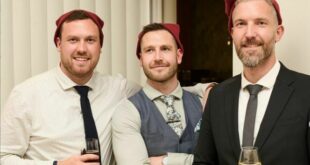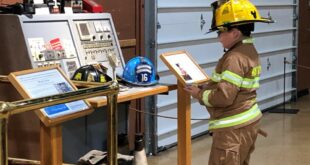Lisa Wilson says she sensed “something wasn’t right” when her son Phoenix was around 18 months old. “He was losing skills,” Wilson remembers. “He had a few words, then he lost them. We didn’t know it was autism. We knew next to nothing about autism.”

Wilson turned to the internet, but her searches generated more questions than answers. Finally, a friend advised her to go to Kennedy Krieger Institute. Wilson conceded because, she says: “You can only hang around chat rooms and Google so much.”
Phoenix was diagnosed with autism a few months past his second birthday. But even before the official diagnosis came, the family was entered into the Early Achievements program at Kennedy Krieger’s Center for Autism and Related Disorders. This program “mimics preschool but it’s a more high-tech, purposeful preschool,” Wilson says. There, “the [staff and teachers] taught me that my son can learn.” And there, Wilson learned about and joined SPARK for Autism.
Launched in 2015 by the Simons Foundation’s Autism Research Initiative, SPARK for Autism aims to gather the largest-ever community of families affected by autism and create a symbiotic link between families and researchers that will help both groups find the answers they need.
The Simons Foundation invited 23 sites nationwide to participate, including Baltimore’s Kennedy Krieger Institute.
“This is a long-term commitment the Simons Foundation is making. It’s important. It’s impactful,” says Dr. Wendy Chung, SPARK’s principal investigator. And hopefully it’s “extremely rewarding for everyone. In just the first year, more than 20,000 people with autism enrolled, in addition to their family members,” she says. “Now there are 22,000. It’s incredibly exhilarating to see researchers and families work together to fill in the gaps in our knowledge of autism.”
Kennedy Krieger neuropsychologist Ericka Wodka says when families register with SPARK, they are mailed what she calls a “spit kit” for both parents and children. Participants’ saliva is then mailed to a lab, where researchers use the sample to research the possible genetic factors that may lead to autism.
SPARK’s genomic analysis has not only helped researchers identify genes associated with autism and its symptoms, this analysis has, in turn, been used for prognostic purposes, researchers say.
For participants, this genetic analysis can provide “a road map to the future,” Chung says. For instance, she says, the genes may indicate “if there might be any medical issues, like seizures, that can come up. Or if there’s an associated risk of heart disease.” The genetic test can also help families “have a sense of what to expect in terms of development” and help families and caregivers tailor treatment. Chung advises that it’s not a perfect 20-20 gaze into the future, “but it lets [participants] know which range, which end of the spectrum they’re in.”
Being able to identify genetic components of autism also helps parents alleviate any sense of guilt they may be experiencing, Chung says. “We’re closing in on what causes this and what didn’t cause this. Parents don’t have to wonder, ‘Was it something I ate? Or medication?’ We can now say, ‘No, we actually know and it’s this, a genetic change that started with the child.’ Mothers have this guilt they’ve been carrying for many years,” Chung says. Being aware of the genetic factors of autism “allows parents to let go of that guilt.”
Recently, Johns Hopkins researchers reached out to the SPARK network to recruit participants for a study that addressed questions about potential exposures during pregnancy. Participants were able to send in their answers online.
The request garnered a 60 percent response rate, which is unheard of in research circles, Chung says. “Within minutes, responses were coming in. … Researchers are grateful for the opportunity to connect with families and families’ voices are being heard. It’s amazing to see how engaged, willing and generous people have been with their participation. I’ve never seen anything like it.”
SPARK also allows parents to connect with each other through online forums. “It’s like being able to find a club you’re the member of,” Chung says. “This community of families share experiences, and tricks of the trade.”
Wodka says SPARK gives the families she treats a community, as well as the latest research findings and research options locally. “It’s leading to discoveries, not only answering the ‘why?’ but also ‘what do we do now that we’re here?’”
Wilson’s son Phoenix has made significant strides with his verbal apraxia in recent years, using an Apple tablet pre-loaded with pictorial signs. “He’s using phrases and sentences. He’s ordering his own food at McDonald’s. He’s back into the world,” Wilson says. The skills he’s learned will, Wilson hopes, “help him be integrated into mainstream classrooms with his peers.”
She advises parents who observe changes associated with the autistic spectrum to “get to a professional, an institute like Kennedy Krieger, if you think you’re seeing these signs. Start talking to parents who have already done it and have walked the journey already. The greatest input is from them.” Wilson says she’s glad she joined SPARK because it’s connected their family with researchers and with other families whose kids face the same challenges as Phoenix.
“There’s still so much we don’t know about autism,” Wilson says. “People used to think it was caused by poor parenting skills. Fast forward to today, and the research is happening. This project is trying to undertake a huge sample base, and maybe [it will] make up for all those years of misguided ideas.”
For more information or to join the Baltimore-area SPARK for Autism community, visit sparkforautism.org/kki
 Baltimore's Child Baltimore's Child
Baltimore's Child Baltimore's Child








